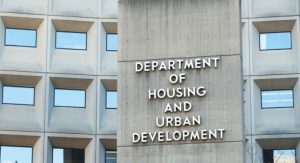 Industry experts expect HUD's recent updates to the CWCOT program to help improve efficiencies and minimize losses, according to a complimentary DS News webinar that was presented this week by Auction.com.
Industry experts expect HUD's recent updates to the CWCOT program to help improve efficiencies and minimize losses, according to a complimentary DS News webinar that was presented this week by Auction.com.
You can watch a recording of the webinar here.
The webinar, entitled "CWCOT Update: What Servicers Need to Know," aired Tuesday afternoon, attracting an audience of mortgage servicing and property preservation professionals interested to learn more about the changes to the Claims Without Conveyance of Title program.
Wes G. Isley, Senior Managing Director of Carrington Holding Company LLC, moderated the conversation, which outlined the history of the program, as well as details of what the recent changes, outlined in a HUD mortgagee letter, mean from an operations standpoint.
The CWCOT program began in 2013 as an FHA claim option in which insurance benefits are paid to a mortgagee, after the sale of the property to a third-party purchaser at foreclosure of the FHA-insured mortgage, or through post-foreclosure sales efforts.
“For some 85 years … FHA has supported the housing market through just about every regional and national economic cycle,” said Tim Rood, Head of Industry Relations for SitusAMC.
FHA’s success at minimizing losses “are less notable,” he said—hence the much-anticipated changes, which had been campaigned for by industry groups such as the National Mortgage Servicing Association.
As the FHA explained in a July statement, these latest CWCOT enhancements take into consideration public feedback received earlier this year when a first draft was posted on the Single-Family Housing Drafting Table.
The enhancements will make FHA’s CWCOT program “more viable for foreclosure sales associated with defaulted FHA-insured mortgages,” the FHA added in the same statement.
Jesse Roth, SVP of Strategic Partnerships and Business Development at Auction.com, detailed some of the more significant changes, which include allowing mortgagees to submit eviction costs and certain eligible property preservation expenses incurred during post-foreclosure sales opportunities.
“This means that you aren’t out of pocket on these properties if they sell through second chance, and also means you should start eviction proceedings immediately,” Roth explained.
He also discussed changes to the appraisal allowance—a second appraisal upon vacancy for a property that had an exterior-only appraisal, where an interior appraisal could not be obtained is now permitted.
“HUD will reimburse the cost of a new appraisal if the first was exterior only, and reset the [Commissioner's Adjusted Fair Market Value] CAFMV based on the new appraisal,” Roth said.
“Getting the property vacant faster means you’ll be able to reset the CAFMV before you hit the conveyance deadline,” he added. “This fixes one of the largest structural issues with the CWCOT program.”
There exists "real excitement about the changes within the servicing community," said the final panelist, Dave Worrall, President of LoanCare, a ServiceLink company, who went into specifics related to putting the new CWCOT standards into practice.
"A lot must be done to implement [the changes]," he said. "Like with any change, compliance is key."

 DSNews The homepage of the servicing industry
DSNews The homepage of the servicing industry









